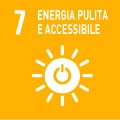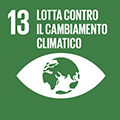- Docente: Saverio Ottaviano
- Crediti formativi: 3
- SSD: ING-IND/08
- Lingua di insegnamento: Inglese
- Moduli: Saverio Ottaviano (Modulo 1) Saverio Ottaviano (Modulo 2)
- Modalità didattica: Convenzionale - Lezioni in presenza (Modulo 1) Convenzionale - Lezioni in presenza (Modulo 2)
- Campus: Ravenna
-
Corso:
Laurea Magistrale in
Offshore Engineering (cod. 9249)
Valido anche per Laurea Magistrale in Offshore Engineering (cod. 9249)
Conoscenze e abilità da conseguire
The course is aimed at providing basic principles for design and operation of typical fluid machines used for island application in off-shore installations.
Contenuti
Conservation of mass and energy. Definition of enthalpy, entropy, specific heat.
Definition and classification of fluid machines. Working principle and performance of fluid machines. Turbomachines and positive displacement machines.
Gas turbine power system: layout and working principle. Thermodynamic analysis of ideal Brayton cycle and real cycle with ideal gas: temperature-specific entropy diagram, isentropic and polytropic compression and expansion, specific work, heat input, thermal efficiency. Combustion chamber architecture. Combustion chamber efficiency and thermal balance. Thermodynamic optimization of Brayton cycle.
Regenerative gas turbine: layout and thermodynamic diagram. Limit conditions on compressor and turbine outlet temperatures and on pressure ratio: calculation of beta limit. Effect of the increment of beta. Heat transfer analysis on the recuperator, thermal balance, heat transfer diagram. Heat transfer effectiveness. Micro-GT in combined heat and power (CHP) applications: layout and working principle, electrical and thermal efficiency, fuel utilization factor. Micro-GT architecture examples.
Use of hydrogen as fuel in gas turbines: comparison of hydrogen and methane properties (molar mass, density, volume and mass energy density, storage pressure, Wobbe index). Properties of blends H2-CH4 varying the H2 volume fraction. Effect on fuel mass flow rate, air-fuel ratio, equivalence ratio, flammability limits, flame temperature.
Steam turbine cycle: layout, working principle, T-s diagram of Rankine and Hirn cycles. Specific work, heat input and thermal efficiency. Total power output and total efficiency. Minimum quality at turbine outlet. Effect of vaporization and condensation pressure. Degasser. Heat transfer diagram for the condenser. Pressure-enthalpy diagram of steam cycle.
Combined cycle power plant: layout, T-s, working principle, heat transfer diagram of the heat recovery steam generator (HRSG). Total power and total efficiency, heat recovery factor. Power allocation in combined cycle (Ratio of gas turbine power and steam turbine power). Thermal balance in the HRSG.
Organic Rankine cycle (ORC) power system: overview; heat sources and applications. Comparison of ORC and steam cycle: differences depending on fluid properties (critical point, slope of saturation curve, heat of vaporization); dry, isentropic and wet fluids. Dry and wet expansion. Working fluid selection criteria: thermodynamic properties, environmental and safety properties. Definition of ozone depletion potential (ODP) and global warming potential (GWP). Expander types. Layout and T-s diagram of simple and recuperated ORC. Intermediate heat transfer loop.
Testi/Bibliografia
Energy systems
J. H. Horlock, Combined Power Plants.
Macchi, E., 2017. Organic Rankine Cycle (ORC) Power Systems. Elsevier.
Negri di Montenegro G., Bianchi M., Peretto A., Sistemi energetici e macchine a fluido, Pitagora 2009 (in
italian).
Turbomachinery
Dixon, S. L., et al. Fluid Mechanics and Thermodynamics of Turbomachinery, Elsevier Science & Technology,
2013. ProQuest Ebook Central, https://ebookcentral.proquest.com/lib/unibo/detail.action?docID=5754462.
H. I. H. Saravanamuttoo, Gordon Frederick Crichton Rogers, Henry Cohen, Gas Turbine Theory, Pearson
Education, 2001. ISBN: 013015847X, 9780130158475.
Bianchi M., Melino F., Peretto A., Sistemi energetici: complementi, Pitagora 2008 (in italian).
Metodi didattici
Lectures and exercises (tutored and self-directed).
Modalità di verifica e valutazione dell'apprendimento
The knowledge acquired by the student will be assessed through an oral exam consisting of theory and exercises.
Strumenti a supporto della didattica
Course materials, tutorials, files, videos, etc. will be available on Virtuale (unibo.it) [https://virtuale.unibo.it/]
Orario di ricevimento
Consulta il sito web di Saverio Ottaviano
SDGs


L'insegnamento contribuisce al perseguimento degli Obiettivi di Sviluppo Sostenibile dell'Agenda 2030 dell'ONU.
